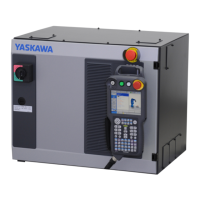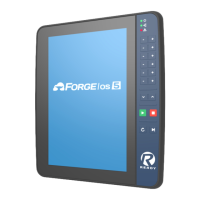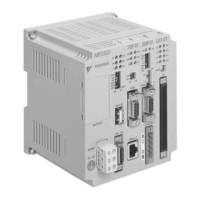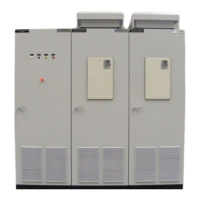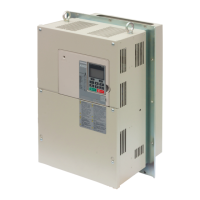4.3, 8 DISPLAYING STATUS iNPUT/OUTPUT SIGNALS
Depress the DGN function key, and the state of
every input loutput signal willbe displayed on
the CRT. This is possible at any time even dur–
ing automatic operation.
170rmore detailof this operation, see
IIyASpJAC Lx3 Maintenance hfanu~. “
The state of the input /output signal is also
given in the hexadecimal notation at the right-
most column for the ease of maintenance work.
(1) Depress the ALM key.
Then up to four pairs of alarm code and mes-
sage willbe displayed, with more serious one
on a higher line.
Note :
The alarm screen willappear during an
alarm state and, therefore, itis not needed to
operate the
1’AGE
key.
+
Fig. 4.40 Display of Alarms
Fig. 4.39
(2) TO
reset the alarm status and screen, re-
move the cause of alarm then depress the
RESET key.
4,3.9 ALARM CODE (ALM) DISPLAY
Alarm codes and other data are displayed by the
following operations :
For the detailof alarm code,
refer to Appen–
dix 5 List of Alarm Codes .
(,1)
a.
b.
c.
d.
(2)
Depress the ALM function key. One of the
following screens is displayed:
Display of the alarm number and the
message.
(ALARM)
Display of operating time.
(TIMER)
Display of registered program number.
(PROGRAM No, TABLE )
Display of maintenance history.
4, 3. 9.2 Message Display (ALARM)’
This feature can display messages on the CRT
screen by the instruction of PC when the
machine sequence control option (PC system) is
built in the unit.
Normally, this feature is used
to display the cause of the alarm detected by the
Pc .
When the message display instruction (macro
instruction) is executed in the PC, “ALM” or
“A /B” flashes at the bottom of the CRT screen
regardless of mode and function.
(MAINTEFJANCE)
The above screens may
be selected
In this case, the message may be displayed
by the following operation:
by depressing
PAGE
.
4.3.9.1
Alarm Code Display
——
t
-1
or
key.
PAG~
.
(1) Depress the ALM function key. The mes-
sage is displayed at the bottom of the screen
along with the sequence error code.
The
message to be displayed depends on the
machine. For details, refer to the instruc–
tion manual of the machine in question.
If an alarm status has happened, “ALM” or “AI
B” (on battery alarm) blinks on the bottom line
of the screen regardless of working mode and
function.
If this happens, the detailed informa–
tion of the alarm status may be displayed by the
following operation.
172
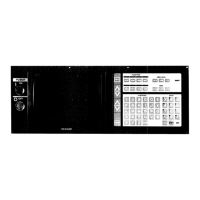
